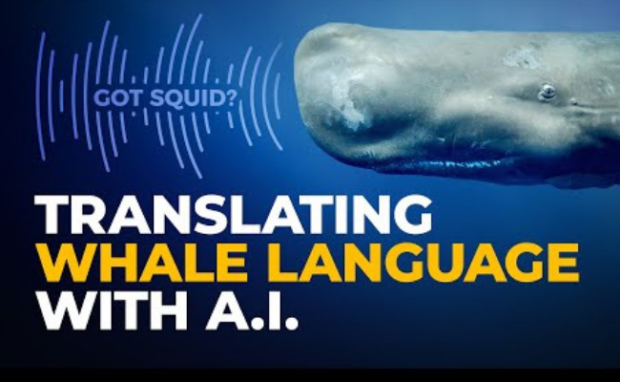AI makes whale translator app possible
How do you talk to whales? Do you speak regular English sentences in a slow, low, and guttural voice, ala Dory from the “Finding Nemo” movie? After many years, many scientists claim they have found the answer in artificial intelligence. Multiple research teams say it facilitates recording and cataloging whale sounds to create effective translators.
AI development can help you realize your dream of becoming the comic book hero Aquaman by talking to fish. Jokes aside, artificial intelligence may help us understand the Animal Kingdom further. It could help preserve endangered species by informing us whenever they feel threatened. Maybe future apps could help you talk to your pet, too.
This article will discuss how CETI will use artificial intelligence to create an AI whale translator. Later, I will discuss other AI language programs.
How does AI help create a whale translator?

Photo Credit: eightify.app
Artificial intelligence could match whale sounds with our speech so that we could derive meaning from the former. We could send messages they understand, too.
Believe it or not, David Gruber and his colleagues gained inspiration to create an AI whale translator from the Search for Extraterrestrial Intelligence Project. SETI wants to communicate with alien lifeforms in the stars, but we still can’t do that with those in our oceans.
Medium asked, “Is there anything special about human language that sets it apart from animal communication?” How do we know animals can’t communicate like we do?
After all, animals communicate with each other. For example, the news outlet said bats argue over food, differentiate genders, and call each other by name.
Gruber and his research team chose whales to learn about animal communication because they have complex communication systems. Also, these cetaceans talk to each other with 2-second clicks called codas.
The experts believe we could match those noises with our language. Consequently, they formed the Cetacean Translation Initiative or CETI. Their project will involve the following steps:
You may also like: Meta launches AI language translator
- CETI will deploy buoyed sensor arrays to locate and record whales.
- Next, they will attach recording devices to whales to identify who’s talking to whom.
- Also, the researchers will deploy aquatic drones to observe these gigantic sea creatures.
- CETI will also deploy aerial drones to monitor whales.
This project will collect enormous amounts of data that will take ages to analyze and match with human language. Hence, Gruber and his team will use a large language model like GPT-3.
It contains millions of words that it could match to whale codas. As a result, the whale researchers hope it will help them understand and communicate with these majestic creatures.
Are there other AI language projects?
Creating an AI whale translator seems outlandish, so you may need more proof that it could work. Hence, let’s discuss other AI projects that facilitate learning human languages like English.
You probably know the Duolingo language learning app and its bird mascot, “Duo.” Yet, did you know Duo uses artificial intelligence to help millions understand new languages?
The app released a new subscription tier called Duolingo Max. It uses OpenAI’s latest LLM, GPT-4, to simulate scenarios requiring you to use a new language. Let’s explore how that works with the following example:
You may also like: AI glasses for the speech-impaired
- The app will instruct you to ask your younger brother if he or she wants coffee in Japanese.
- The right response is, “Anta wa ko-hi tai desu ka?”
- Then, Duolingo Max tests you further by switching the “sibling” with your “boss” or a similar higher-up.
- Let’s say you gave a wrong answer by repeating the same sentence.
- In response, the app will explain that you should have replied, “Anata wa ko-hi tai desu ka?” It is a more respectable structure that is more suitable for higher-ups, especially in Japanese society that values social hierarchy.
Principal product manager Edwin Bodge said AI integration allows users to learn “immersively.” As a result, they are more likely to be ready for real-life conversations.
Of course, let’s not forget Google Lens, arguably a more recognizable app than Duolingo. It uses AI to translate foreign text viewed through your phone camera.
Conclusion
CETI researchers plan on using artificial intelligence to communicate with whales. Their unique communication system enables them to match it to human languages.
At the time of writing, the team hadn’t created an AI whale translator. Still, they would probably succeed in building one after years of research and development.
In the meantime, why not learn more about the latest digital trends at Inquirer Tech? It’s a great source of information about artificial intelligence, gadgets, and more.
